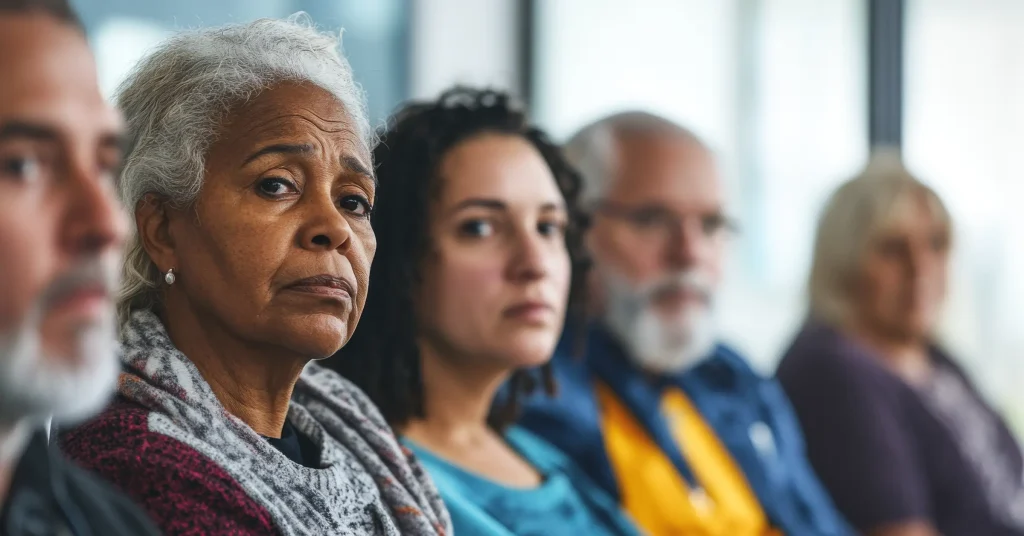In modern nursing, quality clinical judgment requires an understanding of how a patient’s health might be affected by social, economic, and environmental factors. For example:
- How might a patient’s birthplace or socioeconomic status (SES) affect their worldview?
- How might a patient’s place of worship sway what treatments they consent to?
- Does a patient’s current living arrangements impact their healthcare quality or access?
Questions like these are the essence of the AACN Essentials’ social determinants of health (SDOH) and are crucial to delivering effective, patient-centered care. As a nurse educator, you play a key role in shaping how your students recognize and react to their patients’ determinants of health.
The AACN Essentials and Social Determinants of Health
SDOH is the final professional nursing practice concept listed in the Essentials. It is an important element of the population health domain and builds on a few of the other 8 concepts, such as health policy, communication, and diversity, equity, and inclusion. SDOH “are the conditions in the environment where people are born, live, learn, work, play, worship, and age that affect a wide range of health, functioning, and quality of life outcomes and risks.”1
SDOH Nursing Concept Tool Kit
To help you communicate social determinants of health to your students, the AACN created a tool kit with a wealth of integrative learning strategies, resources, recommended content, recommended assessment strategies, and references. It includes the 6 following course objectives:2
- Explore social determinants of health using the World Health Organization’s SDOH conceptual framework in courses where SDOH is not typically presented.
- Describe concepts and theories underlying the nature and impact of SDOH on population health.
- Analyze the impact of dominant political and sociocultural philosophies on the health of local and global communities.
- Analyze the effects of discrimination and oppression on SES and health.
- Analyze the link between physical environment and population health disparities.
- Describe population health promotion approaches to mitigate the effects of SDOH on poor health.
Incorporating SDOH into Nursing Education
To address evolving healthcare needs and better serve diverse populations, nurse education must address a broader range of criteria than has traditionally been delivered through a focus on acute care settings. As nurses, we are the frontline in ensuring positive patient interactions, which can rely greatly on understanding SDOH. But how can this best be communicated to your students?
OJIN Report: Preparing Today’s Nurses
A 2018 report published in The Online Journal of Issues in Nursing (OJIN) took a deep dive into SDOH and nursing education. The authors summarized their recommendations for incorporating SDOH into nursing curricula:3
- Commit to the integration of content related to SDOH throughout curricula.
- Expand clinical education experiences outside of the acute care setting.
- Develop interprofessional education initiatives that encourage collaboration.
- Focus on assessment skills such as motivational interviewing and empathic inquiry.
- Increase curricular content related to social justice and advocacy.
- Create intentional programs of service learning.
- Require faculty education programs related to SDOH and curricular content.
- Focus on improving workforce, student, and faculty diversity.
ISU Workbook: SDOH in Nursing Education
In 2023, Iowa State University published their own findings for integrating SDOH into nursing curricula and practice. They concluded that incorporating SDOH concepts into the curriculum is a foundation, but students will only gain true competence and confidence through experiential learning. Their strategies include:4
- Interprofessional Education and Collaboration: These experiences can be integrated with SDOH concepts to improve collaboration skills, leadership, teamwork, and diversity of thought.
- Case Studies: Unfolding case studies can be tailored to present different SDOH components over a period of time to evaluate their impact on patient care holistically.
- Motivational Interviewing and Empathic Inquiry Education: These elements can be included in didactic content to soften SDOH screenings, build better nurse-client relationships, and improve health outcomes.
- Simulation: Incorporating SDOH concepts into simulations can give your students a unique perspective on various care settings, populations, and aggregates.
- Advocacy and Policy: Combining the values of altruism, autonomy, integrity, human dignity, and social justice with SDOH concepts can highlight the importance of SDOH in reducing health disparities.
- Service-Learning Experiences: These experiences give your students personal insight into the difficult SDOH issues many patients face while simultaneously helping community partners.
Using UWorld for SDOH Curriculum Integration
Through UWorld Nursing course content, you can create assignments and learning activities that enhance your students’ understanding of social determinants of health. For example:
- Our unfolding case studies feature realistic scenarios that can be used to drive discussion around SDOH.
- Our NGN items and explanations can be assigned as homework, used in lectures, and presented as in-class polls.
- Our resources can be implemented across your nursing program to emphasize SDOH in various care settings.
Why SDOH Are Essential for Nursing Students
To provide the most effective care possible, nurses today must get to know their patients on a more personal level. While this approach takes time to master, consistent practice throughout nursing school can lead to greater health outcomes and overall performance in the field. By elevating your students’ understanding of SDOH, you put them in a better position to mitigate health disparities and inequities and experience a more fulfilling nursing career.
References
- The Essentials: Core Competencies for Professional Nursing Education, AACN, 17 Jan. 2023, www.aacnnursing.org/Portals/0/PDFs/Publications/Essentials-2021.pdf.
- “Social Determinants of Health Concept Tool Kit” The Essentials Database Kit, AACN, https://www.aacnnursing.org/essentials/database/kit/i/c_social_det.
- Thornton, M., Persaud, S., (September 30, 2018) "Preparing Today’s Nurses: Social Determinants of Health and Nursing Education" OJIN: The Online Journal of Issues in Nursing Vol. 23, No. 3, Manuscript 5.
- Bowker D. & Kerkove K. 2023. Social Determinants of Health in Nursing Education: Integrating Into Curriculum and Practice.







